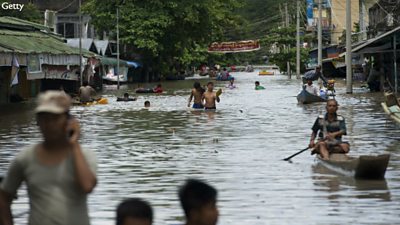Downloads
Publication date: October 2016
Authors: Nicola Bailey and Henning Goransson Sandberg
Overview: 91�ȱ� Media Action’s Lifeline programming is special media programming that aims to alleviate people’s suffering and help them survive and recover in the aftermath of a humanitarian disaster. To equip humanitarian, government and media practitioners with the knowledge, skills and processes they need to meet the communication needs of people caught up in a crisis, 91�ȱ� Media Action carries out emergency preparedness work, including training with practitioners from across these fields. This study focuses on two cases in countries where 91�ȱ� Media Action has completed such preparedness work, subsequently responded to disasters with programming, and conducted evaluations. These are the Nepal earthquake in April/May 2015 and flooding in Myanmar following Cyclone Komen in July 2015. It brings together key findings from across the two cases on what worked to help prepare 91�ȱ� Media Action and partners to respond effectively.
The evaluation finds that:
- 91�ȱ� Media Action production teams and other local media practitioners were able to produce programmes that audiences considered relevant, trustworthy and useful thanks to the knowledge and skills they gained during Lifeline training
- Preparedness work – including the training – built valuable relationships between people working in the media, government and humanitarian agencies
- Lifeline trainees were able to leverage these relationships when disaster struck – collaborating to ensure vital, accurate information was broadcast quickly to the people who needed it
- Audiences took action individually and collectively after being inspired by hearing solutions to the problems they faced and listening to stories from others affected by the crisis. They also appreciated the opportunity to make their voices heard and ask questions on air.
